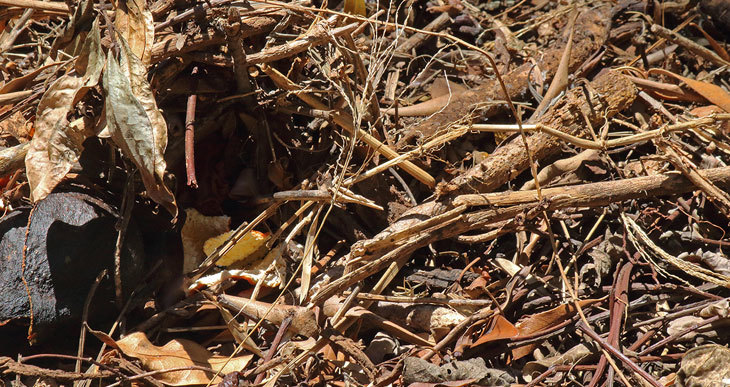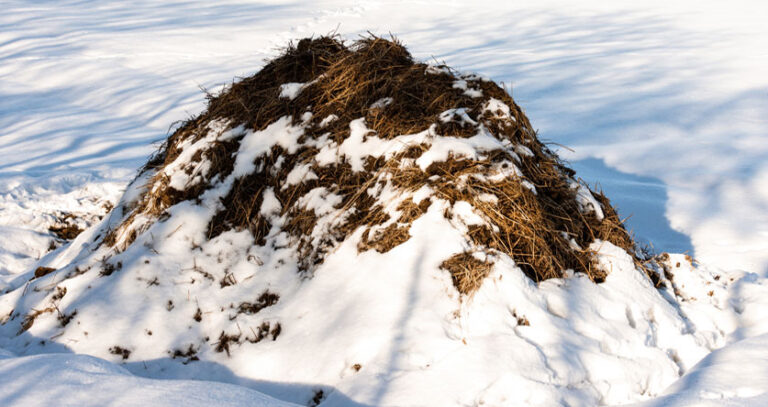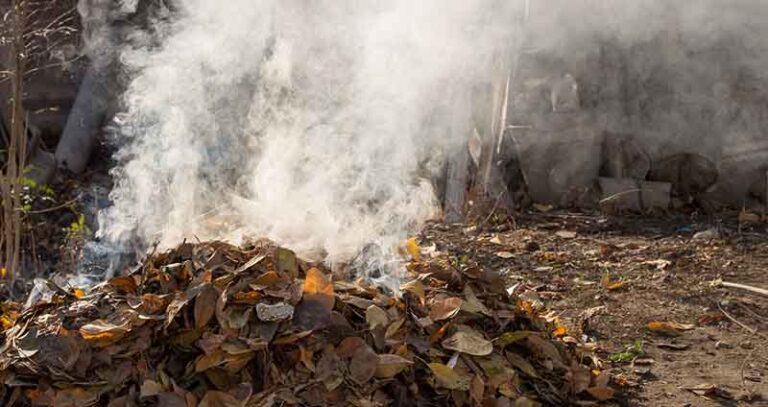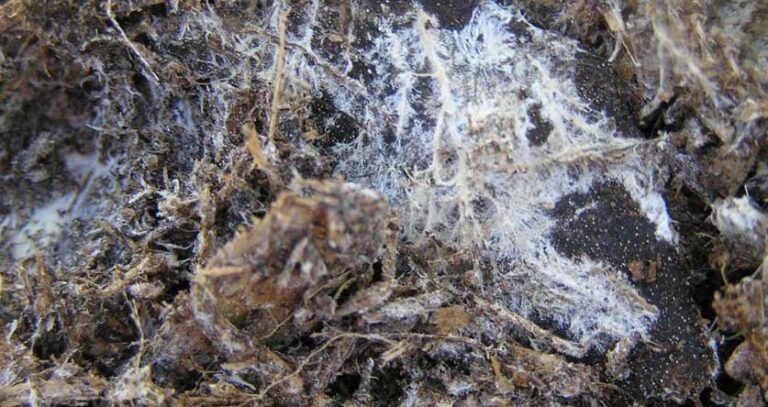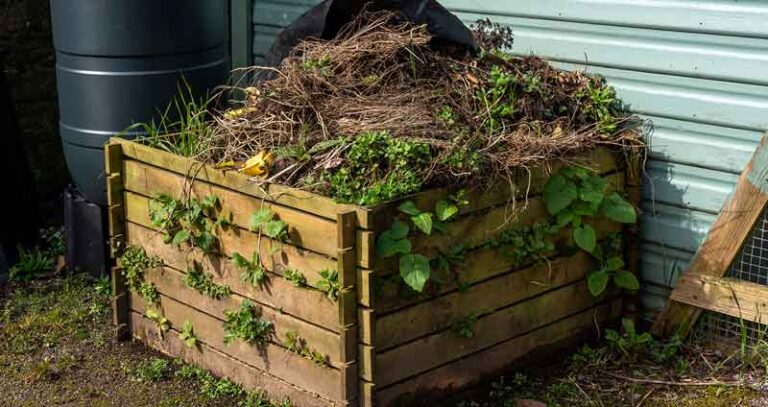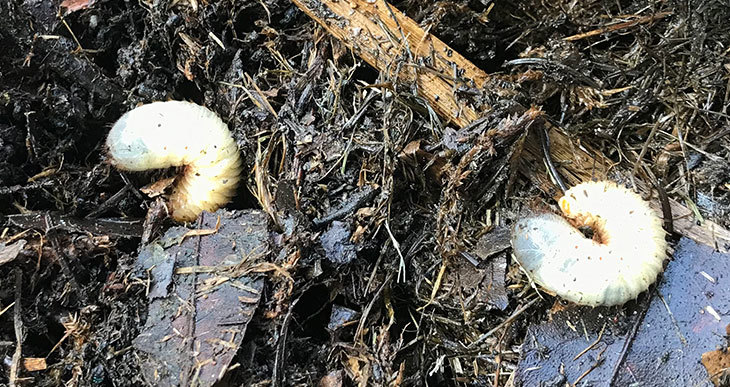Mold In Compost (Should You Be Worried?)
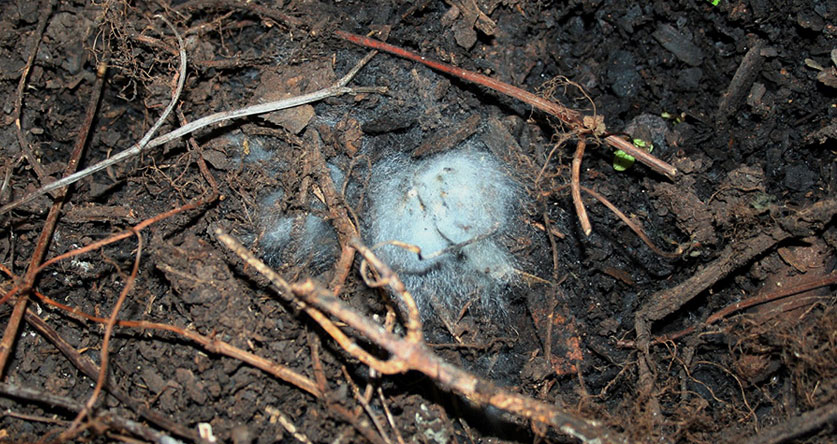
It can be a bit of a shock!
Finding mold growing in your compost pile isn’t the most pleasant surprise.
If you’ve discovered something moldy in your compost, you’re probably wondering whether this is good or bad?
And if your compost has mold, can you still use it? Should you try to prevent it?
And what about adding moldy organic material to your compost? Can this be done?
Phew! So many “moldering” questions 🙂
I’ll explain everything you need to know about mold and compost in the following article…
Moldy Compost
Adding moldy organic material to your compost is not a problem. It adds beneficial decomposing microorganisms to the mixture. Likewise, it is not a problem if your compost pile has developed mold. But you should turn the pile regularly to mix it evenly throughout the compost. Also, use less water to reduce mold.
As gardeners, we sometimes need to experiment and tweak our garden processes to get the most value from them, and composting is no different. However, when our composting efforts don’t turn out the way we expect, we wonder how to proceed.
Mold in compost is one of those occurrences. It’s a bit of a dilemma. Because mostly, we’re taught that mold is a bad thing.
This raises the question of whether composting moldy material is acceptable. Or whether we can use compost from our pile that has developed mold.
Is Compost Supposed To Mold?
So should there be mold in my compost? The first time I discovered mold in my compost, I freaked out a little, and I wasn’t sure what to do.
Today, as a seasoned composter, my advice is, “don’t panic”! The fact is, it’s perfectly normal for compost to have some level of mold.
However, remember that excessive amounts of mold can upset the balance of the compost.
Mold develops in warm, moist conditions (sounds a lot like the environment in your compost pile… Right?!). Mold is a natural part of the decomposition of all that organic matter!
So don’t worry!
What about Moldy Food? Can it be composted?
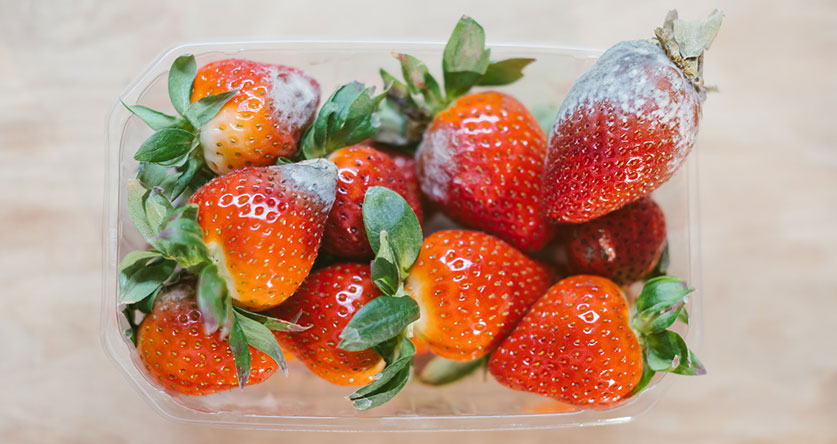
Composting moldy food is perfectly fine. In fact, it is one of the best ways to recycle spoiled food and recover something valuable for your garden.
Mold in compost is beneficial to your compost pile’s decomposition process. Adding moldy food scraps from your kitchen can help kickstart or accelerate composting.
Even if you do not add mold directly to your compost, it will develop naturally in the pile’s warm, damp environment.
Why Does My Compost Have Mold?
Your compost has mold because it is a warm, humid environment that is perfect for developing fungal growth. Tiny mold spores settle on the decaying material in the compost pile, which has ideal conditions for them to grow.
In my experience, the higher the humidity in the compost pile, the more likely the pile is to develop visible fungal or mold growth.
But Is Mold Good For Compost?
Generally speaking, a certain level of mold in your compost is good for the decomposition process. However, mold in your compost becomes a problem when there is an imbalance and mold growth becomes excessive.
Some molds can produce dangerous toxins called mycotoxins, which are detrimental to your plants, and possibly to you if you eat plants that have absorbed these toxins!
When the mold is prolific, it’s difficult to distinguish good mold from bad, so you should never allow the mold growth in your compost to grow unchecked.
Turn your compost more regularly and stop watering. Aerating the pile will help dry it out and should reduce fungal development.
Is Moldy Compost Bad For Plants?
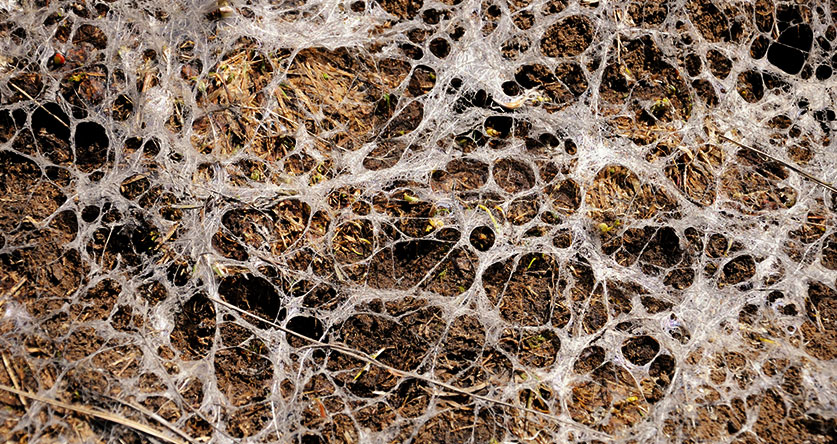
Mold and fungi are a natural part of the decomposition process and do not affect compost quality. In fact, their presence is beneficial for breaking down tough organic materials like the cellulose found in woody substances.
It’s normal to find fungi and actinomycetes during the composting process. They work at medium temperatures, and you’ll often see them around the fringes of the pile (they leave the hot center of a pile to the thermophilic fungi).
If you spot some white or grayish threads that look like cobwebs, these are actinomycetes.
What To Do If My Compost Has Mold
While there’s no way to completely prevent mold, you can minimize its growth by turning your compost pile regularly.
I have found that turning the compost every 2 to 3 days is an effective measure to keep the mold growth under control.
Turning the compost aerates the mix and distributes the moisture and mold evenly throughout the compost. You can do this more efficiently with an aeration tool like this (Amazon). This prevents a large amount of mold growth in a single area of your compost.
Aeration is especially needed if you find green-looking mold in your compost. This is the result of oxygenless composting! Believe me… you’ll know it when you find it because of the nasty smell!
How To Get Rid Of Mold In Compost
Mold means that your compost heap is healthy, so it is not a cause for stress unless you see the mold begin to reproduce prolifically.
Simple compost pile management is the best way to manage and reduce mold in compost. In most cases, excessive mold develops in compost piles that have been neglected and not managed correctly.
The best way to reduce mold in your compost is to take the following steps:
- Turn the compost regularly. This is the best method to control mold development in your compost. Most recommendations are to turn the compost once a week, but turning every 2 to 3-days will help disperse mold.
- Reduce the moisture content. The best way to reduce moisture content in a compost pile is to add more “brown” material to the pile. The dry, woody material absorbs some of the moisture in the compost, reducing the overall humidity and, thus, mold growth.
- Turn up the heat. Suppose you regularly struggle against excessive mold in your compost. In that case, it may be due to the high humidity in your local climate. Hot composting in these locations will lower the mold development in the compost pile.
Compost Mold Dangers & Precautions
Mold is a small fungus that thrives in warm, moist locations and especially likes decaying organic matter. Although some types of mold can cause problems, they’re not necessarily dangerous.
The main thing to keep in mind is balance. If your compost is unbalanced, you’ll need to adjust it. If it’s too mushy or too damp, it’s a sign that it’s time to adjust it.
Three main mold types develop in compost:
- green mold
- white mold
- pink mold
White and green mold development in compost is natural. Still, the growth of pink mold indicates the presence of potentially toxic mold.
Any pink mold on your compost should be scraped off and discarded. Green and white mold are beneficial mold types, and the compost can simply be turned to distribute the mold evenly through the pile.
Those are the precautions for your compost, but what about your personal protection when handling your compost?
For a start, always wear gloves. These rubber-coated gardening gloves are a good option. (Amazon)
Mold in itself is not toxic, but the spores that the fungi give off as part of their reproductive cycle can pose problems for people with respiratory problems such as asthma. Certain people with chest or allergy concerns are more susceptible to mold spores than others.
People with this type of medical history should wear a dust mask when turning the compost or collecting compost to use in the garden.
Conclusion
Mold development in a compost pile often indicates healthy decomposition. However, the compost pile should be turned frequently to evenly distribute any fungal growth through the mixture and prevent it from increasing out of control.
In my experience, simple compost maintenance, such as controlling the moisture level and aerating the compost regularly, will prevent most mold problems in your composting process!


